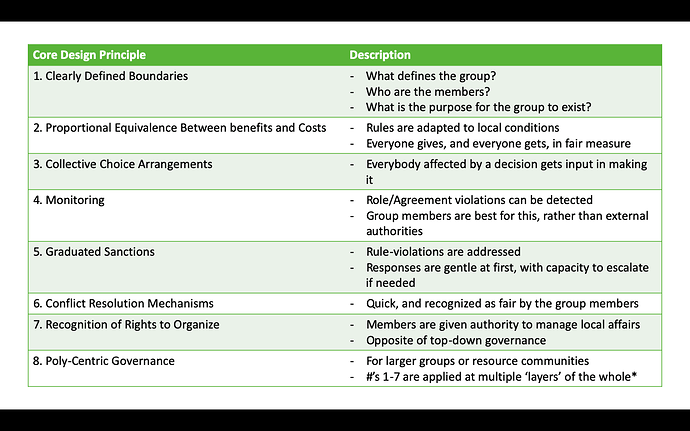Note: Needs more accessible language before publishing.
Image Description: Table of 8 Core Design Principles
- Clearly defined boundaries
- What defines the group?
- Who are the members?
- What is the purpose for the group to exist?
- Proportional Equivalence Between Benefits and Costs
- Rules are adapted to local conditions
- Everyone gives, everyone gets, in fair measure
- Collective Choice Arrangements
- Everybody affected by a decision gets input in making it
- Monitoring
- Role/Agreement violations can be detected
- Group members are best for this, rather than external authorities
- Graduated Sanctions
- Rule-violations are addressed
- Responses are gentle at first, with capacity to escalate if needed
- Conflict Resolution Mechanisms
- Quick, recognized as fair by the group members
- Recognition of Rights to Organize
- Members are given authority to manage local affairs
- Opposite of top-down governance
- Poly-Centric Governance
- For larger groups or resource communities
- #'s 1-7 are applied at multiple ‘layers’ of the whole
Summary Article
